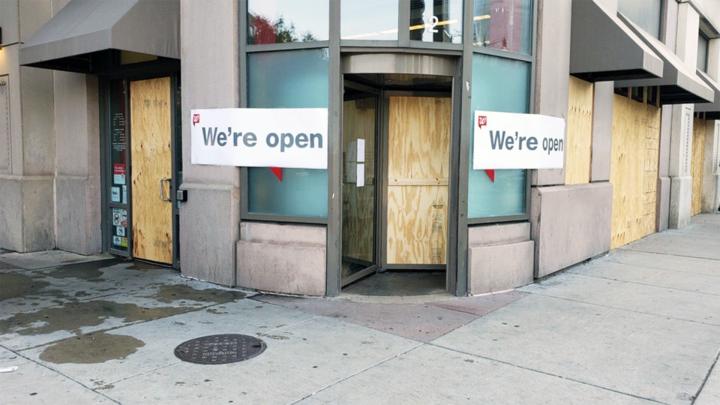Senior Advisor, Sycamore Partners
Retail & Innovation
Greater than the sum of its parts
Unused equipment was pulled from several Walgreens stores to allow one damaged location on the South Side of Chicago to reopen quickly to serve the community.


District manager Phebe Rodgers looks after 12 Walgreens stores on the South Side of Chicago. Nearly all of them were damaged during the violence and looting that followed the tragic death of George Floyd on May 25, when America took its anger to the streets.

Rodgers, having lived and worked on the South Side for most of her 18-year Walgreens career, saw it as her mission to make sure her customers, her neighbors and her community were OK. Steeped in African-American heritage, the South Side is made up of many culturally rich and diverse neighborhoods. However, it’s also one of the largest underserved communities in the U.S. So Rodgers knew she needed to work quickly and get creative.
“I hurried to get something open as soon as possible,” she says. “One of our Hyde Park stores that had been looted didn’t have extensive damage, except for broken cash registers. So the first thing I thought of was to see if any of our nearby stores had registers not in use that we could borrow.”
‘What are we supposed to do?’
Francine Freeman, who manages the store with the broken registers, remembers the first day it was closed due to the damage.
“Customers were walking up to the doors, and we had to apologize and say we were closed,” says Freeman. “People were like, ‘Oh, my God. What are we supposed to do? This is my Walgreens.’ I reassured them we were doing everything we could to get back open.”
Rodgers, with the help of her colleagues, was able to find 11 cash registers from other local Walgreens stores that weren’t in use. She also arranged to have plexiglass shields pulled from one of her damaged stores that was closed indefinitely; to be reinstalled in the pharmacy at Freeman’s store. It reopened five days later.
LISTEN: Freeman talks about what it felt like to hear customers thank them for quickly reopening for the community.
“It was really important to us to get the pharmacy back open,” Rodgers says. “With all of our stores in the district closed, the closest Walgreens that was open was in Greektown, which is about 35 minutes away.”
But it was about more than just convenience – it was also about health. South Side residents are disproportionately afflicted by chronic diseases and other public health concerns.
“In our community, we have a lot of seniors and people with diabetes, high blood pressure, high cholesterol and heart issues who need their medication,” Rodgers says. “At one point, the city had shut down transportation, and a lot of people in this area don’t even drive, so no one could get anywhere. That was hard, and I took it so personally.”
Moving people and things
Patients weren’t the only group that was top of mind. While Rodgers sourced equipment, she also arranged for employees to work shifts at other locations to help with the influx of customers and patients that resulted from having only a small number of stores open on the South Side.
“One time we had 50 patients trying to get into the pharmacy at once, so we had to form a line and ask people to social distance,” Rodgers says. “The line went all the way through the store, outside and down the sidewalk. We gave chairs to some of the elderly customers to sit in while they waited. Our employees were grateful they were still able to come to work and take care of our community, and our patients were happy they still had a place to go to get what they needed.”
At the time of publication, Rodgers had just had a refrigerator taken out of a closed store to help reopen the ninth store in her district.
“If I wasn’t borrowing equipment from other stores, I would still have more closed,” she says. “My team has worked really hard – and still is every day – trying to get going again for our community.”